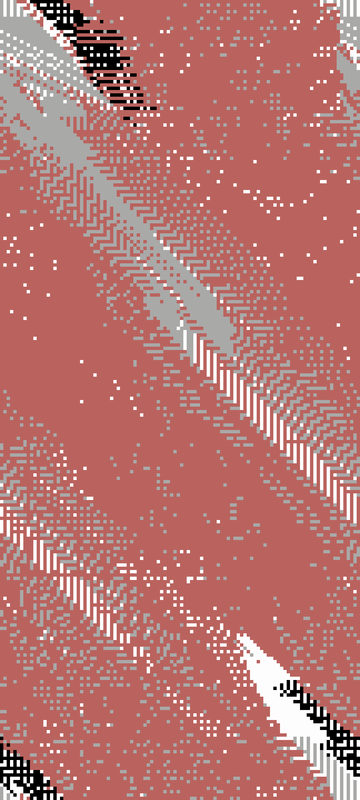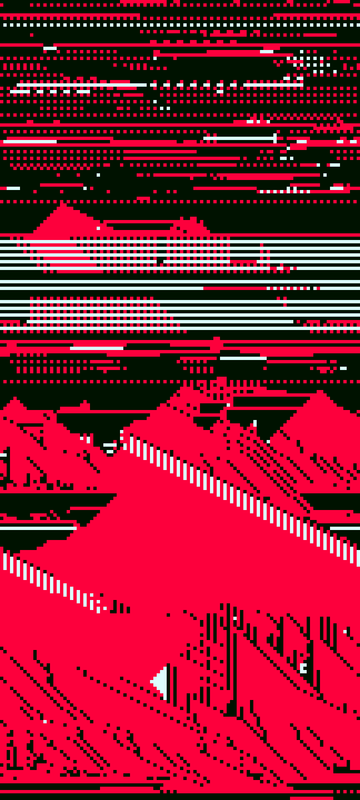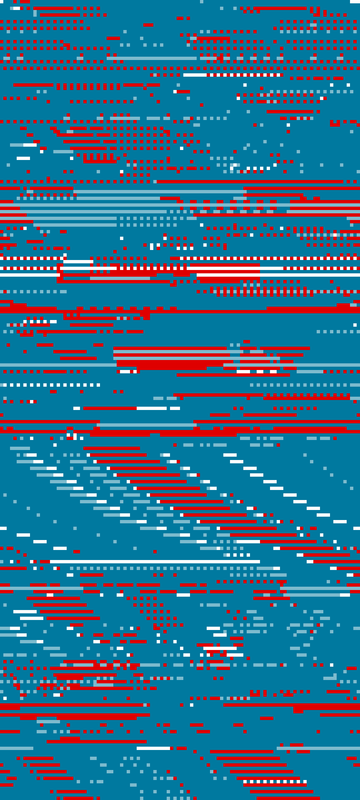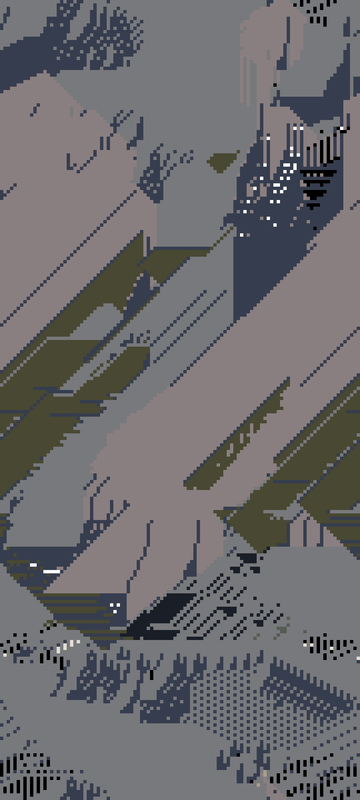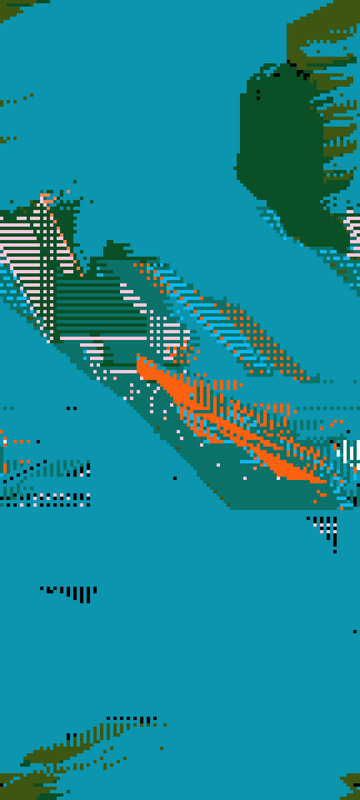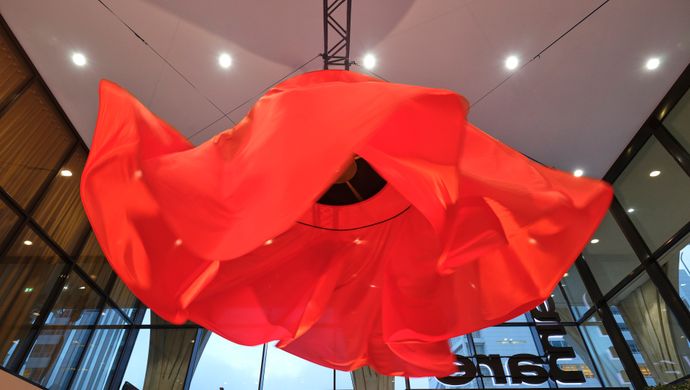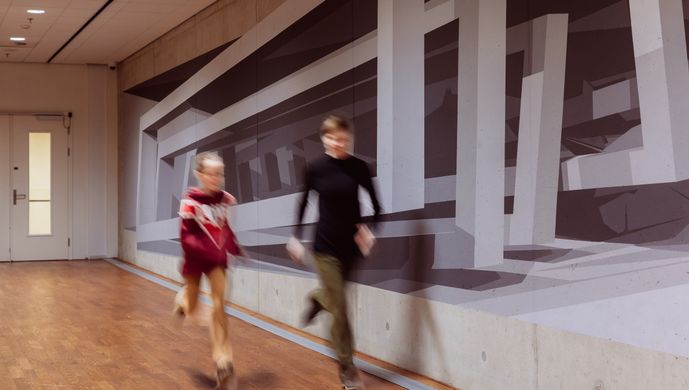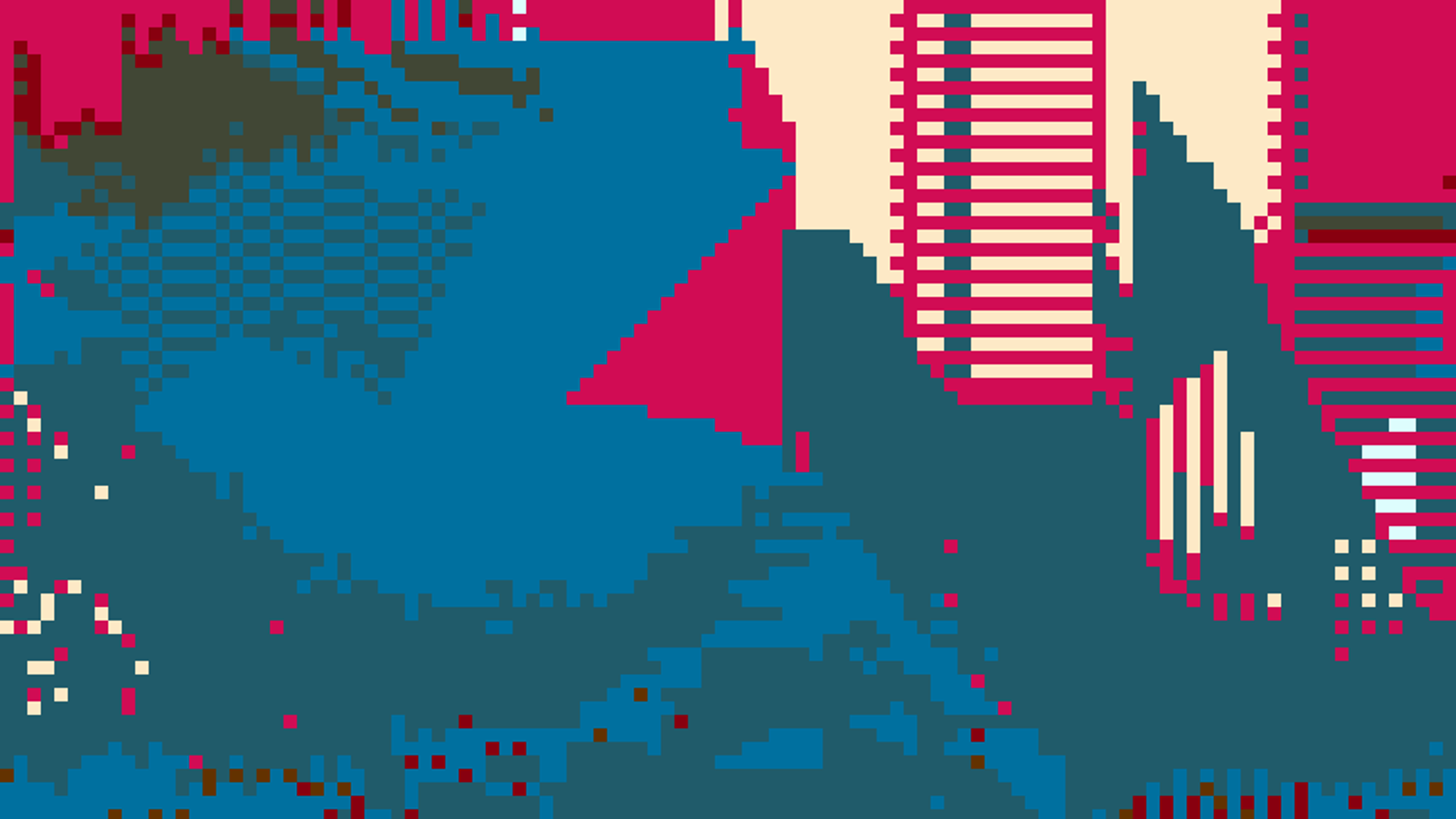
New Vertical Video shows rhythm of a machine
May 2025, interview
Every two months, Vertical Video presents a new video work in Amare’s public space. In May and June, the featured piece is Arcadian Rhythms. We asked the artist, Bas van Koolwijk, five questions to find out more about the piece.
In May and June, your video artwork is on display in Amare. Could you tell us more about its meaning?
Arcadian Rhythms is a generative video work. It is the result of an exploration into automated image composition and is partly inspired by old arcade video games.
Each sequence begins with a number of random color fields appearing on the screen. Then, patterns of pixel blocks are reorganized by an algorithmic system. Based on the surrounding pixels, the model determines how the image continues to evolve. A similar mathematical model is used in cellular automata such as Conway's Game of Life.
The model operates through self-organization, where structure emerges within a chaotic system as the various individual components interact with each other. This is an example of an emergent phenomenon: the whole exhibits properties that are not present in the separate parts. The complexity that can arise in such a system ensures a high degree of unpredictability. Eventually, the process will evolve toward a state of equilibrium and gets stuck into a continuous loop.
The name Arcadian Rhythms refers to circadian rhythm, the internally regulated rhythm or biological clock, of living beings. In this case, the rhythms that arise are only 'natural' to the machine.
Is there a connection between Amare and your artwork?
Right angles, strictly horizontal and vertical divisions and movements. These are forms that are rare in nature but characteristic of human inventions such as architecture and technology. You can find them in the columns, floors, and staircases of a building, but also in the megapixels of 2D computer games and the grid of a digital projection. By reflecting the directions and shapes of the architecture within these dimensions, the artwork establishes a relationship with the building.
Can you tell us more about the creation process?
The work originates from an experiment for a new device with a microprocessor that has fairly limited computing power. I was looking for a calculation that would produce highly unpredictable visual output. The compositions that emerged from the initial experiments were so surprising that they led to a separate project. For the Vertical Video installation at Amare, I adjusted the resolution and frame rate to meet the requirements of the location.
What else do you do as an artist, and where does your inspiration come from?
In my work I use both sound and image - analog or digital - as interchangeable data to produce visual and acoustic compositions in which both forms influence one another. The vocabulary of the medium, or the language of the machine, is often a source of inspiration. I develop my own hardware and software applications, resulting in live performances, installations and single screen videos.
What do you hope that visitors will take away from your video artwork?
I hope the work invites the viewer to reflect on the essence of creation and the impact of technology on our perception of the world. The way the images take shape can be seen as a metaphor for how thoughts develop into ideas. There are plenty of other parallels. For example, there is a clear relationship with musical patterns.
Discover more about Bas van Koolwijk and about Vertical Video



